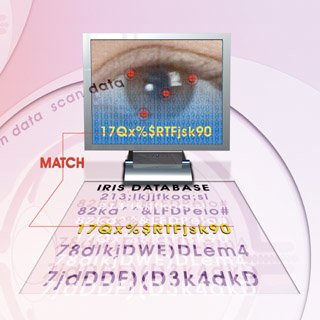Chapter 23. How Biometrics Works
| In today's world, the ability to establish identity is more important than ever. Perhaps someone's identity must be verified before he is allowed into a place of work or a secure facility. Maybe a computer or network only allows certain people to use it, and the identities of those someones must be verified first. For these and many other reasons, the ability to establish identity is vital. But traditional ways of establishing identity, such as looking at a photograph, simply are not accurate enough for high-security settings. And it is often not practical to compare photographs because that is too labor-intensive. Instead, a more cost-effective way needs to be found to establish identity. This is where biometrics comes in. Biometrics establishes identity based on a person's unique physical characteristics, such as voice, fingerprint, iris, and even the structure of his veins. A typical biometric system is made up of three components: a sensor that examines the physical characteristic being used to identify someone, a computer that stores the information, and special software that does the job of examining the information and determining identity. These systems typically have three steps. First, someone enrolls in the systemfor example, at a secure facility. When someone enrolls, his physical characteristic is scanned. Then the record is stored. Finally, when someone uses the system, his information is compared to the records, and if a match is found, his identity is verified and he is allowed admittance. Biometrics is becoming increasingly common as hardware and software become less expensive and as the need for security increases. Not only is it used in secure facilities, but it is even used in typical workplaces as well, and the trend is likely to continue. In fact, biometric systems can now be purchased for as little as $100 to protect a PC from being used except by authorized users. A small finger scanning device is connected to a computer via a USB port; and to use the computer, one needs to put a finger across the scanner. Some people worry that biometrics could be used to invade people's privacy. For example, what if biometric information is sold in the same way that people's financial information or email information is sold? It would mean a great loss of privacyfor the first time, your actual characteristics would be on sale to the highest bidder. At the moment, no laws cover the sale of such information. But, at the moment, there is no demand for such information, either. What's not clear is whether that might change in the future. |
EAN: 2147483647
Pages: 161
